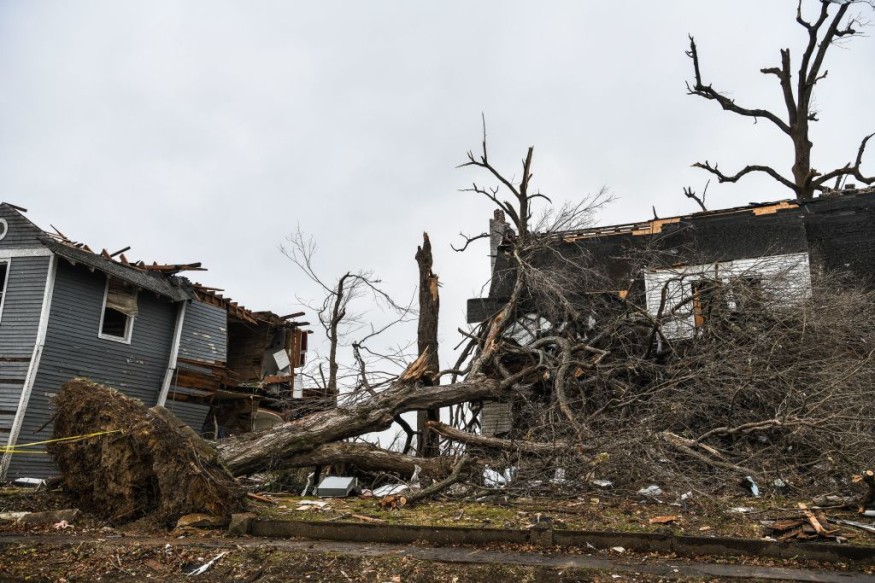The unusual strength and duration of the recent fatal tornadoes brought quite an adverse effect earlier this month. Many people, including the United States President Joe Biden, have asked about climate change's role in such a catastrophe.
As specified in a ScienceAlert report, the "deadly tornado outbreak" that affected communities from Arkansas to Illinois on the evening of December 10 to 11 this year was beyond the usual, specifically for December, leading a lot of people to ask the said question, and if tornadoes will turn out to be more common in a warming world. The two questions may be easier asked than answered, although a new study has offered new hints.
Atmospheric scientist John Allen, a Central Michigan University associate professor of Meteorology, presented some facts from scientific studies on how tornadoes influence climate change, The Conversation reported.
ALSO READ : Engineers Devise Machines to Remove CO2 from the Air, Could Potentially Stop Climate Change

The Ability to Recognize Tornado Conditions
To further understand the manner rising global temperature will impact the climate in the future, researchers are using complex computer prototypes, characterizing the entire Earth system, from the energy streaming of the Sun into how the soil is responding and all things in between, year after year, from one season to the next.
Such models solve millions of equations on a worldwide scale. Each computation adds up, necessitating far more computing power than what a desktop computer can handle.
To project how the climate of Earth will change through the end of the century, the scientist said they currently need to use an extensive scale. It is like the zoom function present on a camera that looks at a faraway mountain.
The forest can be seen, although individual trees are more challenging to make out, and one pine cone in one of the trees is extremely small to see even when an image is blown up. With climate models, the tinier the object, the more difficult it is to see.
Tornadoes and severe storms and creating them are way under the typical scale that climate models can predict.
3 Key Ingredients for Perfect Timing of Formation of Tornadoes
What can be done instead, is look at the large-scale ingredients, making conditions ripe for tornadoes to form. Two key elements for severe storms include energy drawn by warm, moist air that promotes strong updrafts and changing speed and direction of wind called wind shear, which enables storms to become stronger and longer-lasting.
A third ingredient, which is more difficult to determine, is a stimulus for storms to form, such as a very hot day or probably, a cold front.
Minus such an ingredient, not every favorable environment results in severe storms or tornadoes, although the first two conditions will make severe storms more possible.
Through the use of such ingredients for the characterization of the likelihood of extremely strong storms and tornadoes that form, climate models can sometimes tell about the changing risk.
Strength and Intensity
Over small areas, thunderstorms can be simulated to help us find answers about extreme storms and deal with them accordingly.
Many studies have modeled changes to the frequency of intense storms to further understand such a change to the environment.
In the last few decades, there are evidence showing shifts toward conditions more advantageous for severe storms during the cooler seasons. Meanwhile, the possibility of storms during summertime has reduced.
On the other hand, things are getting trickier for tornadoes. Even in a rather spot-on prediction for the following day, there is no assurance that a tornado will form, New Haven Register said in a similar report. Only a small portion of the storms generated in a favorable environment will generate tornados at all.
Related information about tornadoes and climate change is shown on News Latest's YouTube video below:
Check out more news and information on Climate Change in Science Times.
© 2026 ScienceTimes.com All rights reserved. Do not reproduce without permission. The window to the world of Science Times.










